.webp)
Household biodigester carbon projects aim to curb the amount of emissions being released into the atmosphere by avoiding the use of GHG-intensive fuels (non-renewable biomass and fossil fuels) and by reducing the amount of methane emitted to the atmosphere. These carbon projects can be found in lower-income countries or lower-income areas of countries. Today, there are currently over 150 such projects generating credits in the carbon market.
What is a household biodigester carbon project
Household biodigester projects often claim to conserve or reduce the biomass used by households, mostly for cooking or heating - similar to cookstoves. In addition, these activities can also be claimed as a fuel switch carbon project, from the use of fossil fuels in a baseline to that of renewable fuels in the project scenario. Both project types tend to offer contributions to Sustainable Development Goals and in many cases use the same methodologies. However, household biodigester projects are designed and operate quite differently, which we explain in this blog.
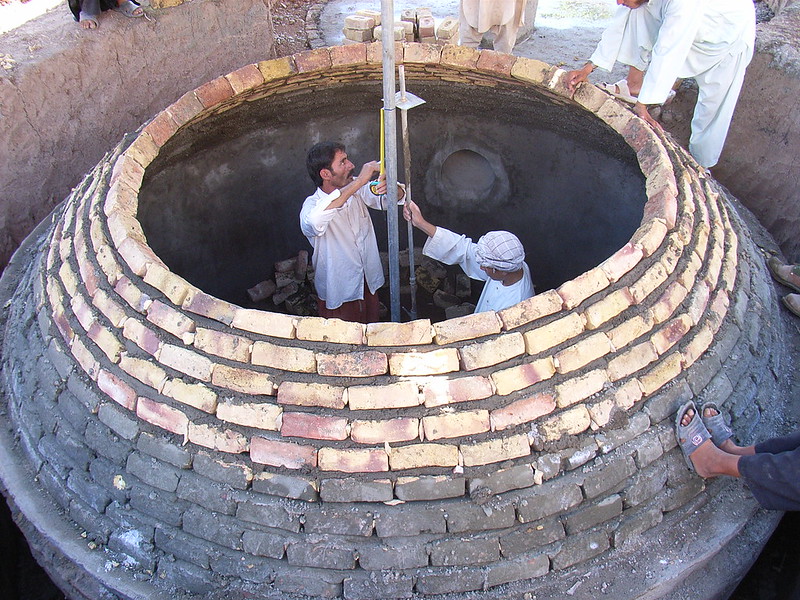
This photo [1] depicts a household biodigester unit mid-construction in Herat, Afghanistan.
Describing biodigesters
Biodigesters are usually dome-shaped with three openings –one for the input and two for the outputs. The main input is usually animal waste (mostly manure), although it can also be household or organic waste. Once inside the digester, the process of anaerobic digestion begins, which is when bacteria start to break down the manure in the absence of oxygen. The bioproduct of this process is biogas that, among other things, is high in methane. This biogas (methane) is the main output of the biodigester. It is typically withdrawn from an opening at the top of the unit and can be used to meet domestic energy requirements (such as heating, cooking, and lighting).
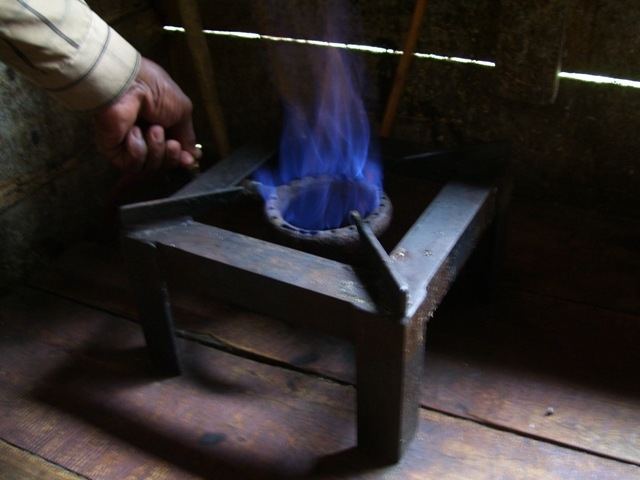
This photo [2] is a representation of methane-based biogas burning through a stove-top.
However, not all of the input waste is decomposed into gas; some of it remains as a concentrated effluent (i.e. liquid waste). This is the second output of the biodigester and is typically spread on fields as it makes for excellent fertilizer.
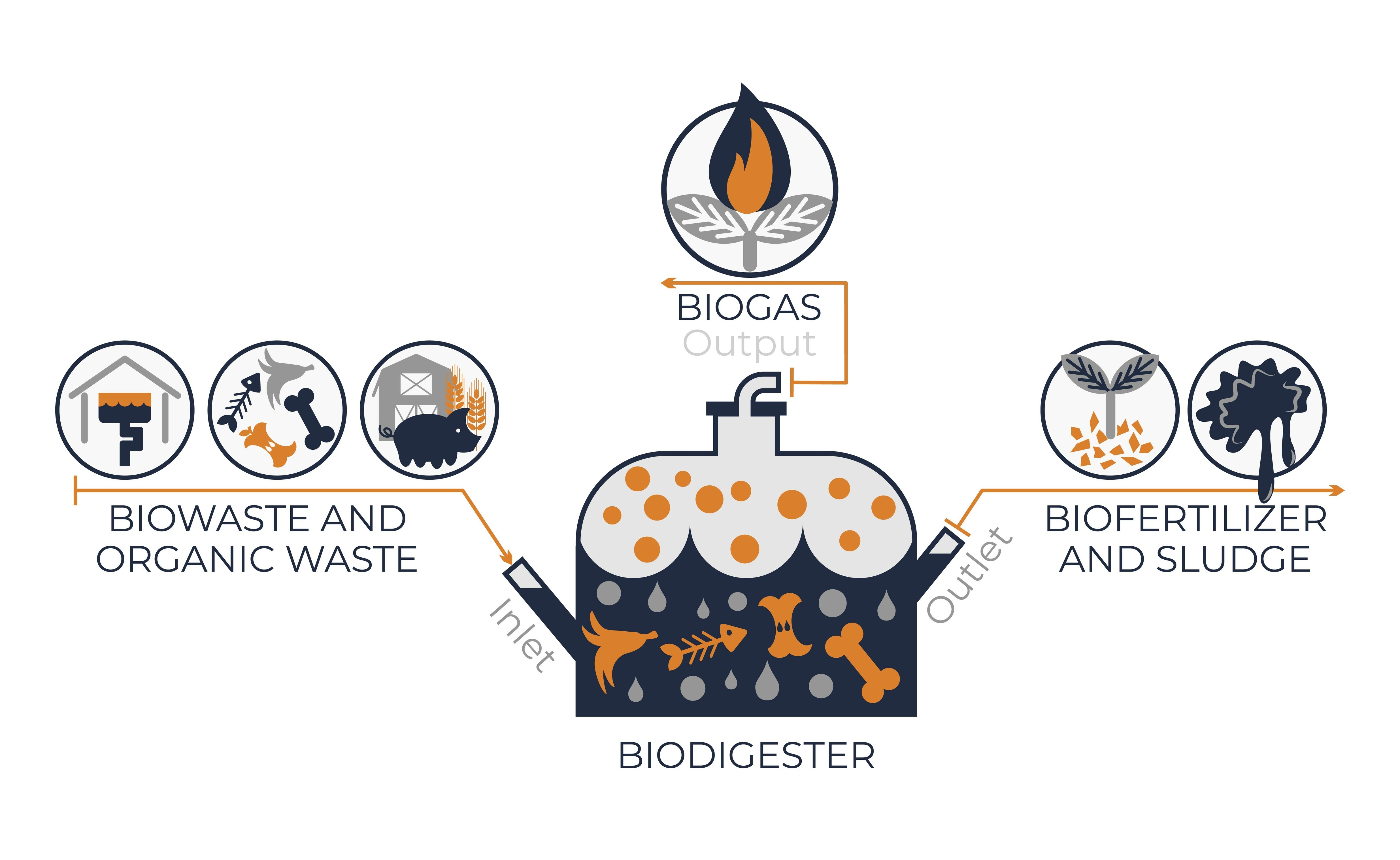
This diagram [3] shows the generic function of biodigesters.
Where biodigester carbon projects take place
Household biodigester projects usually target smallholder farmers located in lower-income countries, or lower-income areas of countries, where the main fuel sources are firewood, charcoal or fossil fuels. In such instances, access to cleaner fuel alternatives such as solar electricity is often prohibitively expensive for households or institutions. Despite the production of the biogas in the digester unit being relatively simple, complicated construction and costly maintenance and operations of units, depending on location, make these projects particularly attractive for the financial incentives offered by the voluntary carbon market (VCM).
Household versus commercial scale biodigesters
There are a variety of biodigester unit sizes and scales. At Calyx Global we assess those at the household and community level (homes or schools) separately from commercial biodigesters at farms, municipal waste sites or waste-water treatment plants.
This blog is focused on household-scale biodigester carbon projects, which use the CDM methodologies (AMS.I-E, AMS.I-C, and AMS.III-R) or Gold Standard’s Technologies and Practices to Displace Decentralized Thermal Energy Consumption’s (TPDDTEC) methodology. These projects install thousands or even hundreds of thousands of units at households in rural areas.
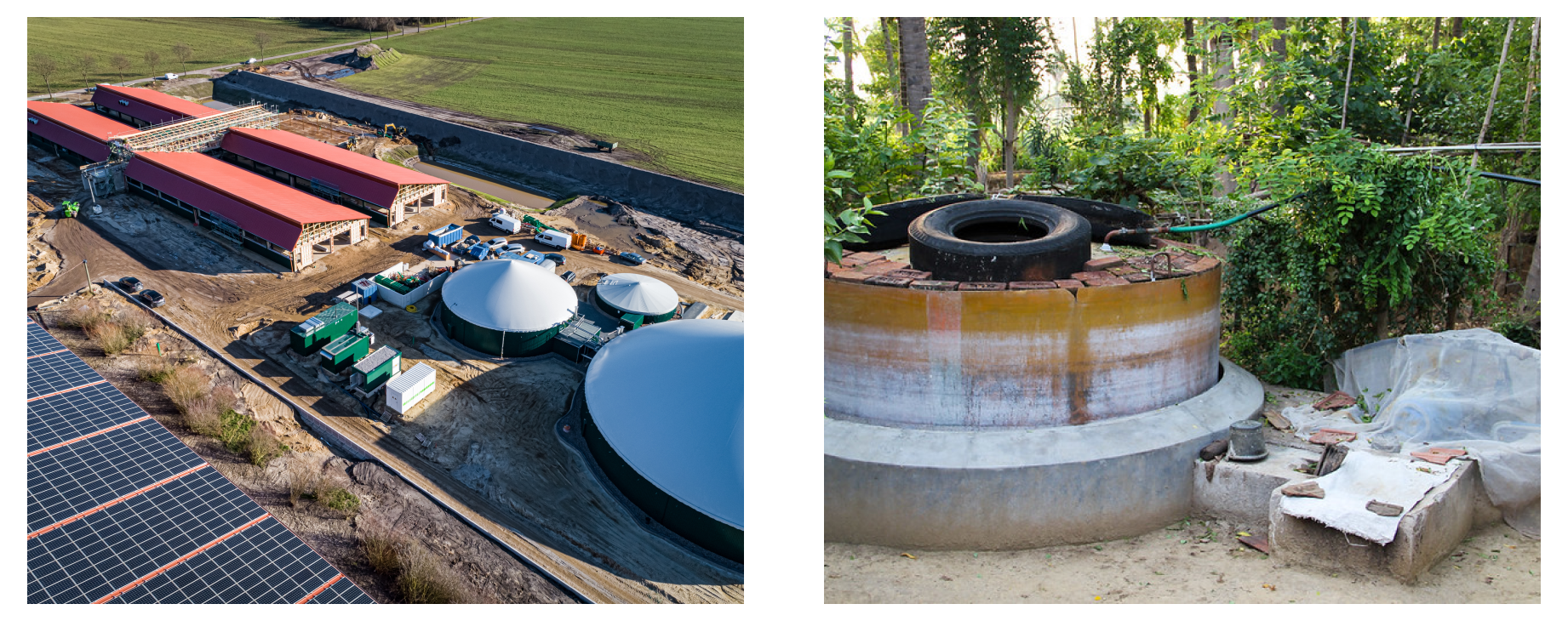
These images show a commercial swine farm and biogas plant [4] and a household unit [5].
How household biodigester carbon projects claim emission reductions
Household biodigester projects can claim emission reductions via two separate pathways:
#1 - Methane Avoidance
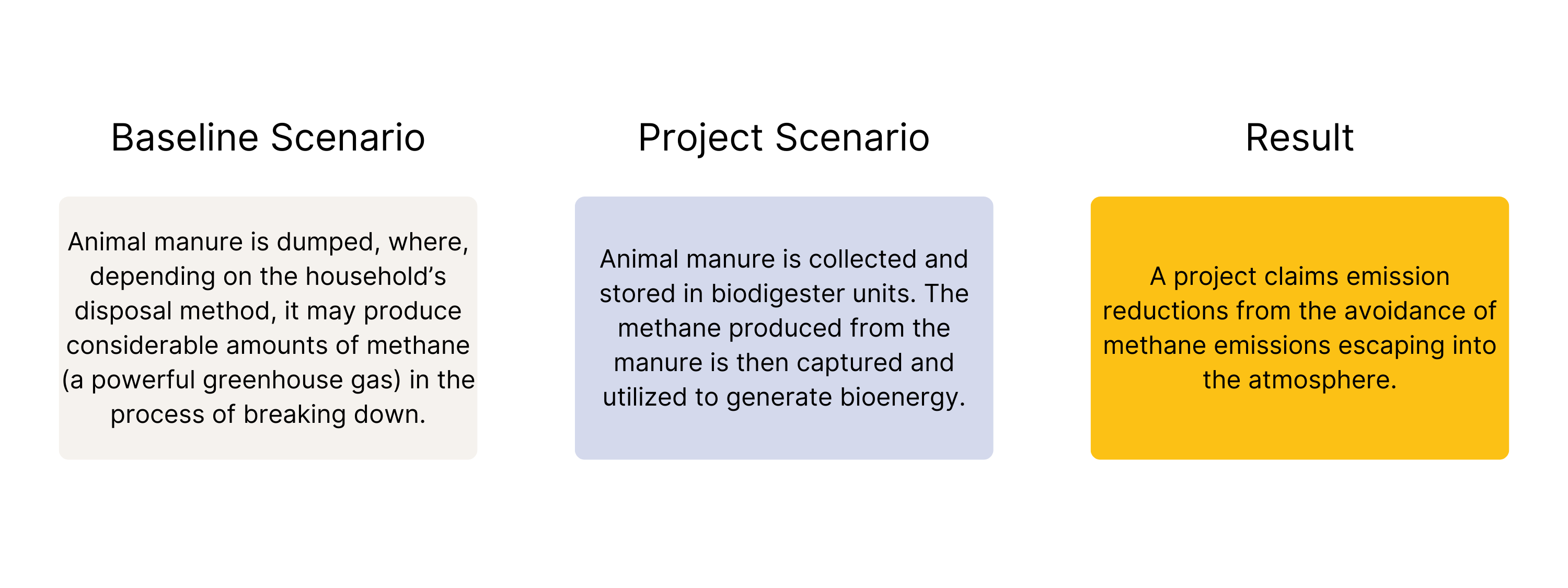
#2 - Fuel Switch to Biogas
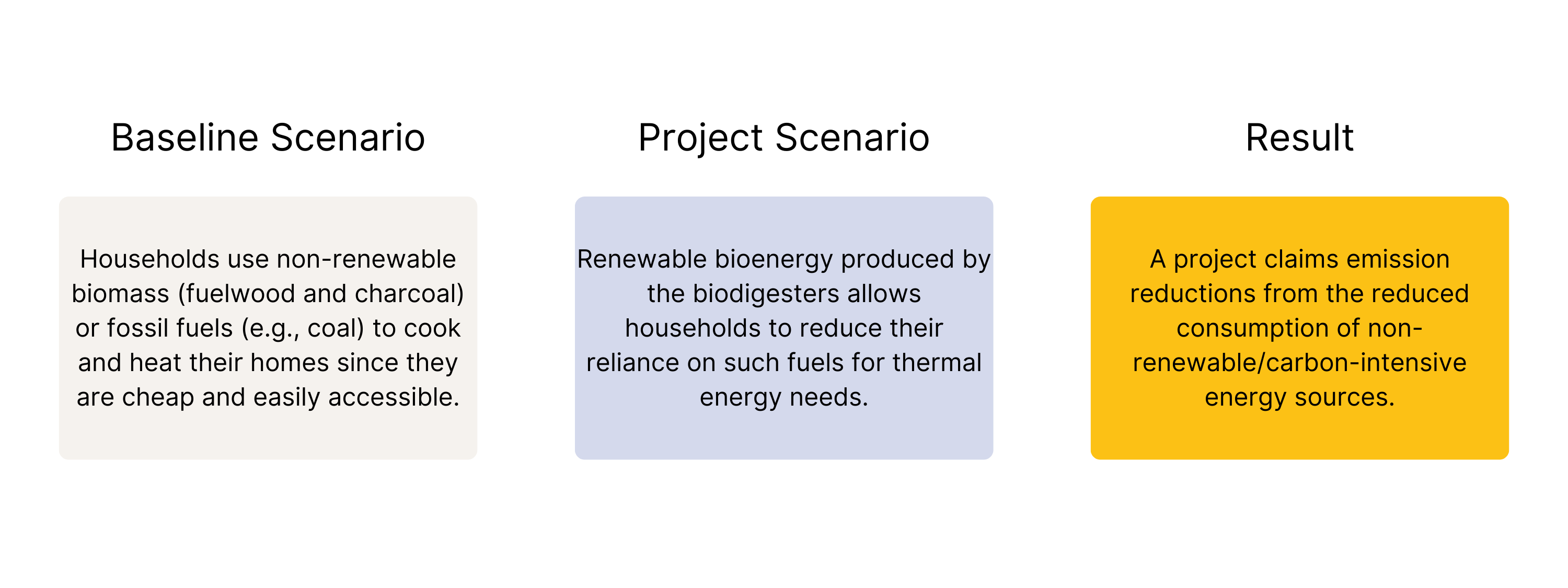
Depending on the methodology applied by the project, emission reductions are typically claimed via both pathways or just the second pathway. While it is possible to only claim emission reductions from the first pathway, it is generally uncommon.
Calyx Global ratings of biodigester projects
To date, Calyx Global has rated 22 household biodigester projects and will be expanding our assessments of this project type. If you’re interested in viewing our ratings of household biodigester projects, contact us about a subscription to the Calyx Global Platform.
Follow us on LinkedIn, or sign up for our Newsletter below to make sure you do not miss out on our series on cookstoves and biodigesters.
Citations:
[1] Khawaja, N. (2010). Digester dome construction. [Photograph]. Flickr. Digester dome construction | Digester dome under constructio… | https://www.flickr.com/photos/gtzecosan/4833631219
[2] Rieck, C. (2010). Biogas use in kitchen. [Photograph]. Flickr. Biogas use in kitchen | Photo by C. Rieck | https://www.flickr.com/photos/gtzecosan/4910426822
[3]© [Alexa Ioanna] / Adobe Stock. | https://stock.adobe.com/images/biodigester-work-system-infographics-vector-graphics-with-illustration-of-bio-digester-container-and-icons-of-biowaste-organic-waste-biofertilizer-sludge-and-biogas/372637918?prev_url=detail
[4] India Water Portal. (2013). The Gobar gas unit fuels the kitchen; slurry feeds the plants. [Photograph]. Flickr. https://www.flickr.com/photos/indiawaterportal/8909152882
[5] India Water Portal. (2013). The Gobar gas unit fuels the kitchen; slurry feeds the plants. [Photograph]. Flickr. The gobar gas unit fuels the kitchen; slurry feeds the plants | https://www.flickr.com/photos/indiawaterportal/8909152882
Get the latest delivered to your inbox
Sign up to our newsletter for the Calyx News and Insights updates.
